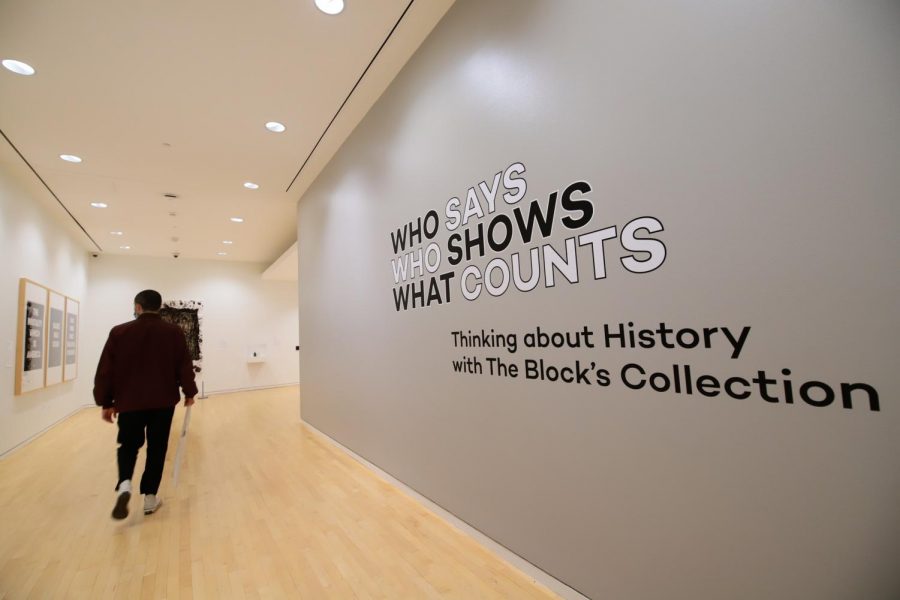The Block Museum’s fall exhibition “Who Says, Who Shows, What Counts” questions historical narratives
Photo courtesy of The Block Museum and Sean Su Photography
“Who Says, Who Shows, What Counts” is The Block Museum’s latest exhibition. It is open at The Block Museum until Dec. 5.
October 4, 2021
In 1990, artist Louise Lawler released “Who Says, Who Shows, Who Counts,” an exhibit of three wine glasses etched with the titular phrases commenting on exclusion and gatekeeping in the art world.
In honor of its 40th anniversary, The Block Museum opened an exhibition this fall inspired by and named after Lawler’s work. Composed entirely of works in the museum’s collection, “Who Says, Who Shows, What Counts” questions art’s relationship with history.
One of the first decisions co-curators Kate Hadley Toftness and Essi Rönkkö made to organize the exhibition was to take a step back. As curators, they wanted the exhibition to speak for itself.
“We really wanted to think about decentering the curatorial voice and look to the artistic strategies that artists have used to question the ways that narratives of the past are told,” said Rönkkö, the associate curator of collections at The Block.
Curators would usually author the explanatory labels in the galleries. But in line with the curators’ goal, a group of Northwestern students, alumni, faculty and staff wrote descriptions for each piece in the gallery.
The majority of works in the exhibition were created by people of color, according to History Prof. Sarah Maza, who offered a contextual introduction at the Wednesday opening keynote. Many of these artists’ works challenge white, mainstream historical narratives.
For his drawing “Of White Bread and Miracles (Gett’n Down),” Chris Pappan, an artist of Kaw, Osage, and Cheyenne River Sioux heritage, repurposed a racist image of an appropriated Native American dance ritual originally published in a Boy Scout manual. He superimposed the drawing over a historical municipal ledger of Evanston, replicating a traditional artistic practice of Plains tribes.
“Our culture is not stagnant. Our culture is not kept in the past,” Pappan said during the roundtable portion of the keynote. “We continue to innovate. We continue to make our work relevant, and we continue to make our work a symbol of who we are today.”
Tonika Lewis Johnson, a Black artist known for her Folded Map Project, spoke in conversation with Pappan about her piece, “6329 S. Paulina and 6330 N. Paulina.” Part of a series of similar photographs, the two pictures depict the residences at corresponding addresses on the North and South Sides of Chicago, illustrating racial and economic disparities.
“Racism is literally built into our urban environment,” Johnson said in the roundtable. “In my work, I tend to focus on how that impacts us today.”
Given that one of the exhibition’s four sub-themes is “critiquing institutions,” some pushback on the concept and habits of museums themselves, including The Block, is inevitable.
Andrea Carlson, an Anishinaabe artist, called museums an “arm of colonization.” It follows then that the inclusion of Native American contemporary art in museums is a radical act, she said in the keynote roundtable.
“Institutions are made of the people who run them, and collections are moral archives,” Carlson said. “Whenever a museum does an exhibition from its own collection, it seems to be a self-portrait of itself.”
Email: alexacrowder2024@u.northwestern.edu
Twitter: @AlexaCrowder
Related Stories:
— Block Museum receives large grant to plan exhibit made by Indigenous artists
— The Block Museum exhibition explores self-care and community



